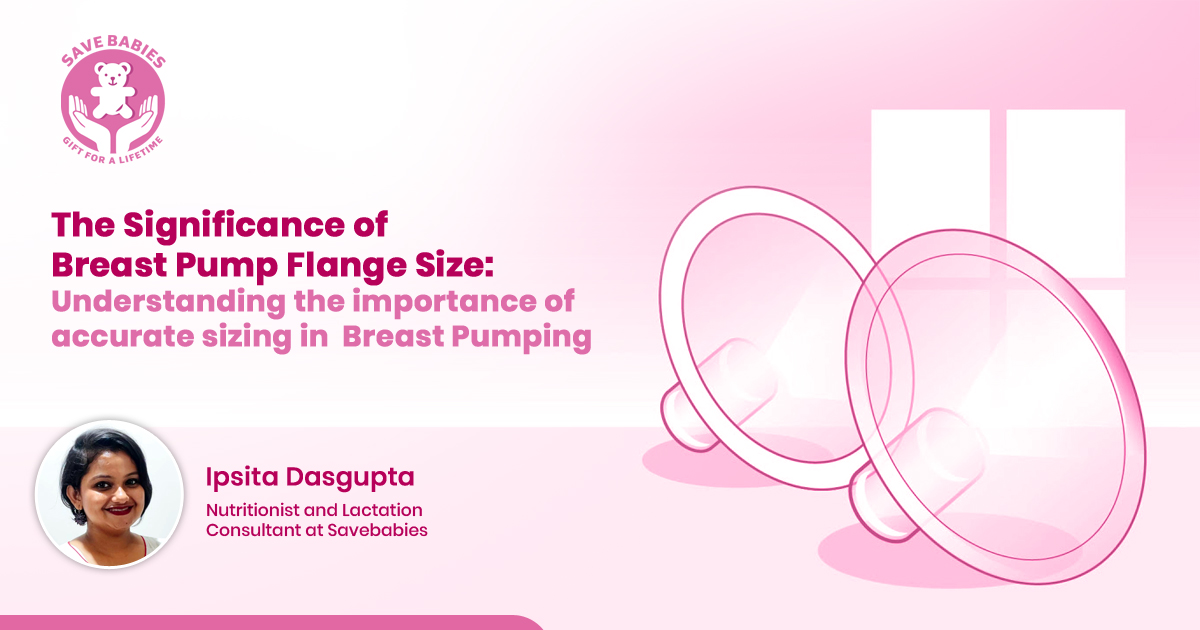Breastfeeding, a natural and nourishing practice, is not without its challenges. Fortunately, breast pumps provide a practical solution for mothers seeking to express their milk for various reasons. Nonetheless, an often overlooked but crucial aspect of breast pump usage is the flange size. Achieving the proper fit between the nipple and breast tissue is paramount to ensure effective suction and maximize optimal milk production. In this article, we will explore the importance of selecting the correct breast pump flange size, exploring how a well-fitted flange size significantly enhances comfort during pumping and boosts the efficiency of milk expression.
The breast pump flange holds a pivotal significance as an integral component within a breast pump system, bearing a vital responsibility in facilitating breast milk expression. This flange constitutes a funnel-shaped plastic apparatus, serving as the connecting piece between the pump and the breast. By establishing direct contact with the nipple, the flange enables the efficient collection of expressed milk, directing it into an attached bottle or alternate collection receptacle.
A critical element in breast pump in breast pump functionality, the breast pump flange assumes a key role in ensuring effective and comfortable breast milk expression during the lactation process. Understanding the components of a breast pump and its function is essential for optimizing the breastfeeding experience and supporting the breastfeeding journey ahead.
Breast Pump Components: Understanding Their Significance and Sizing Options
Tunnel: The tunnel, a cylindrical segment of the flange, encloses the nipple and areola during pumping, serving as a conduit for milk extraction from the breast.
Flange Rim : The flanged rim, forming the outer edge of the flange, establishes direct contact with the breast, ensuring a secure seal. This seal facilitates efficient suction, directing it towards the nipple and breast tissues for optimal milk expression.
Breast shield or Flange : Often used interchangeably, the breast shield encompasses the entire flange assembly, including the tunnel and flange rim. Made from a comfortable BPA-free material, it safely interacts with the breast during pumping.
Connector : The connector links the flange to the tubing or collection bottle of the breast pump, enabling the seamless transfer of expressed milk from the breast shield or flange to the storage container.
Sizing options: Flanges are available in diverse sizes, catering to variations in breast and nipple dimensions. Sizing options typically range from 24mm to 27mm in diameter, with additional smaller or larger sizes also accessible to accommodate individual needs.
Comfort: The significance of selecting the correct flange size lies in ensuring a comfortable milk expression experience. Properly fitting flanges enable a mother’s nipple to align correctly, allowing the areola to move freely without any discomfort caused by rubbing against the flange’s sides. Ill-fitted flanges can lead to discomfort, pain, and even nipple trauma, such as soreness, blisters, or redness.
Efficient milk expression: The efficiency of milk expression is another crucial aspect influenced by the flange size. Flanges that are either too small or too large can hinder milk flow and extraction. When the flange is too small, it may compress milk ducts, impede milk flow, and result in inadequate breast emptying. Conversely, a flange that is too large may cause an ineffective suction and reduced milk removal efficiency. Optimal flange size ensures effective stimulation and complete milk extraction, contributing to maintaining a healthy milk supply and preventing issues like clogged ducts or mastitis.
One size fits all: One of the most common misconceptions is that all women can use the same flange size. In reality, every woman’s body is unique, and different from each other, so, breast and nipple sizes vary significantly. Using an improper-sized flange can lead to discomfort, insufficient milk expression, and potential damage to the breast tissues.
Assuming standard nipple measurements: Many women assume that their nipple size conforms to an average or standard measurement, leading them to select a flange size based on their assumptions rather than an accurate measurement. Precisely measuring the nipple diameter is crucial, as it allows for the selection of a flange size that closely matches the measurements, ensuring optimal fit and comfort.
Neglecting comfort indicators: Some women may disregard discomfort and pain while pumping, assuming it is a natural part of the process. However, such discomfort often indicates an incorrect flange size. It is essential to pay attention to comfort indicators and make adjustments to find the right flange size that promotes pain-free pumping.
Finding the right fit: Determining the ideal flange size can be challenging, as factors like breast shape, nipple length, and tissue elasticity all contribute to the selection process. Trial and error may be necessary to find the most comfortable and efficient flange size.
Limited availability of sizes: A challenge is the limited availability of flange sizes in certain brands or models of breast pumps. This can make it difficult for women with unique breast or nipple sizes to find the proper fit. Exploring different brands or seeking compatibility adapters may help overcome the challenge.
Changes in breast size over time: A woman’s breast size and nipple size can change due to various factors such as pregnancy, postpartum, breastfeeding frequency, etc. As a result, a flange size that once fits perfectly may need adjustment over time.
Understanding these misconceptions and challenges is essential for successful and comfortable pumping. It is advisable to seek guidance from lactation consultants or experts who can offer personalized recommendations for the most suitable flange size based on individual needs
Discomfort and pain: Feeling discomfort or pain during pumping is a clear indication that the flange size may be incorrect. The discomfort can manifest as a pinching or squeezing sensation, nipple soreness, or a stinging feeling. Discomfort may occur immediately or after prolonged use of the breast pump. Nipple rubbing or irritation – If a mother notices that her nipple is rubbing against the sides of the tunnel during pumping, it is likely that the flange size is too small. This can cause friction and irritation.
Areola engulfed or restricted : An improperly sized flange may cause the areola to be drawn into the tunnel excessively or restrict its movement.
Low milk flow or insufficient emptying :If a mother experiences a low milk flow or her breast is not adequately emptied during a pumping session, it could be for an incorrect flange fit. A flange that is too small may compress the milk duct, impede milk flow, and result in inadequate milk removal from the breast.
Reducing the risk of nipple damage or trauma :The correct size of the flange ensures that a mother’s nipple is centered within the tunnel of the flange. When properly aligned, the flange allows for the unrestricted movement of the nipple. This reduces nipple damage and minimizes nipple soreness or other forms of nipple trauma.
How to determine the correct flange size: Every woman’s body is unique, so it’s essential to find the flange size that best suits a mother. Here are a few tips that will help a mother to determine the perfect size of a flange.
Assessing fit :Start with the flange size that closely matches an individual’s nipple diameter. During pumping, observe the fit and monitor the discomfort or pain. To measure a nipple accurately, a mother can use a ruler or a measuring tape. Simply measure the diameter of her nipple with that excluding the surrounding areola. This will help you determine the correct size of the flange.
Using sizing guides: Many breast pump manufacturers provide sizing guides or charts that correlate nipple measurements with recommended flange size. These guides can assist a mother in selecting an appropriate flange size based on her nipple diameter.
Online resources : Online platforms, forums, and breastfeeding communities often offer valuable information and resources related to flange size. A new mom can opt for articles, videos, or discussions where an experienced breastfeeding mother shares their insight and tips on determining the correct flange size. Engaging with these online resources can provide additional guidance and practical advice.
Seeking professional guidance: If a mother is unsure about her correct flange size, consider consulting with a lactation consultant or breastfeeding specialist. They can provide guidance and support in finding the right fit according to a mother’s specific needs and body shape.
Impact on pumping efficiency and milk supply: The size of the breast pump can significantly impact pumping efficiency and milk supply. Here’s how the flange size influences these factors:
Pumping efficiency: Using the correct flange size is essential for maximizing pumping efficiency. An incorrect flange fit can hamper milk flow and affect the effectiveness of the pump suction.
If a flange is too small, it can compress the milk ducts and cut off the quantity of milk flow. This can result in inadequate milk removal and reduced pumping efficiency, which signals the body that less milk is needed, potentially impacting the milk supply.
On the other hand, if the flange is too large, may not provide adequate suction and stimulation. It may result in ineffective milk extraction and reduce the milk output during the pumping routine.
Milk Supply : Proper flange size plays an important role in maintaining a healthy milk supply. Effective milk extraction during pumping sends a signal to the body to continue producing milk.
If the flange does not fit properly to the nipple, it may not fully empty the breast during expressing milk. And result in decreased milk production as the body doesn’t get the signal to produce more milk.
An incorrect flange size can that impedes milk flow can increase the risk of clogged ducts, and mastitis. Incomplete emptying can lead to milk stasis, which can cause inflammation, pain, and potential infections. Experiencing these kinds of pain can discourage a mother from fully emptying her breast from time to time, leading to a lower milk supply over time.
The connection between flange size and breast emptying : The connection between flange size and breast emptying is a prime factor in ensuring effective milk expression during pumping. When choosing the proper flange fit, several aspects should be considered.
Personal comfort and preference : Optimal flange size should provide comfort during pumping out a mother’s milk. It is important to select a size that feels comfortable and does not cause any pain or discomfort. Every woman’s comfort level varies, so, finding the right fit based on personal preference is essential.
Adapting to changes in breast size and shape: Breast or nipple size and shape can change throughout the lactation period. It is important to reassess flange sizing periodically, especially during engorgement or when milk supply fluctuates. Adopting these changes by selecting the appropriate flange size helps ensure effective breast emptying and maintains milk supply.
Exploring different flange styles and materials: Flange comes with various styles and materials. Some may have a few additional features like silicone inserts or massaging cushions to enhance comfort and optimize milk extraction. Exploring different options can help determine which style and material works best for individual needs.
Embarking on the journey to discover the perfect flange fit for pumping can be a rewarding yet challenging task, requiring perseverance, patience, and a willingness to experiment. As a mother who strives to find the ideal flange size, her dedication, and efforts hold immense value. However, if she encounters difficulties in this process, it is highly recommended to seek assistance from a doctor or a lactation consultant. Their expertise and guidance can be valuable, providing essential advice and support to navigate the selection of the most suitable flange fit.
Remember, a mother doesn’t have to navigate this path alone; professional help is available to enhance her pumping experience. Seeking the expertise of a doctor or lactation consultant can make a significant difference in ensuring a comfortable and efficient pumping experience, contributing greatly to a lactating mother’s success in finding the optimal flange size




